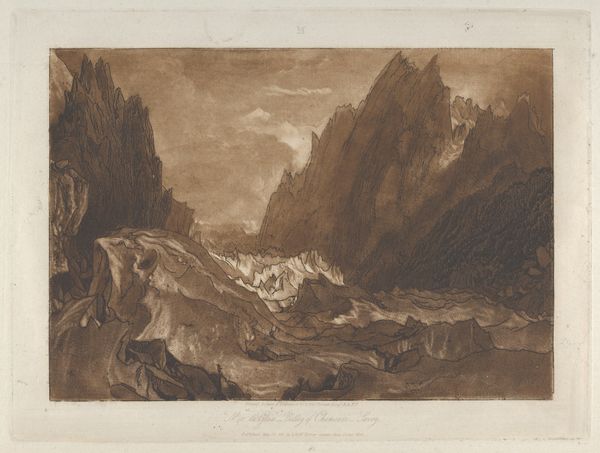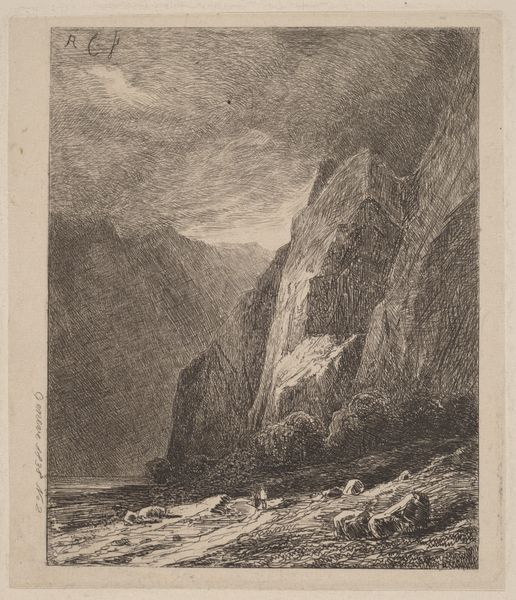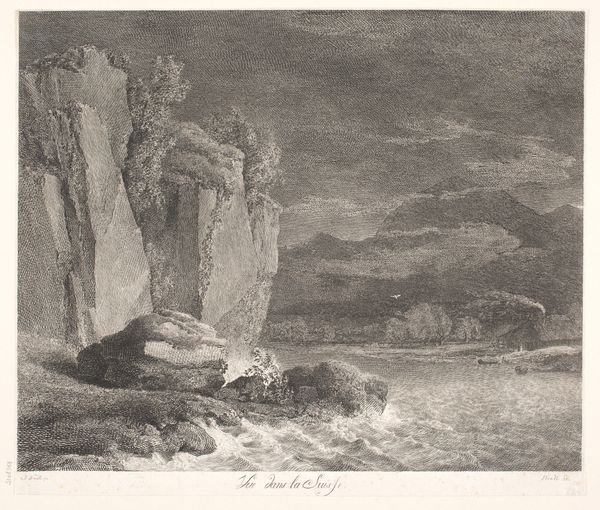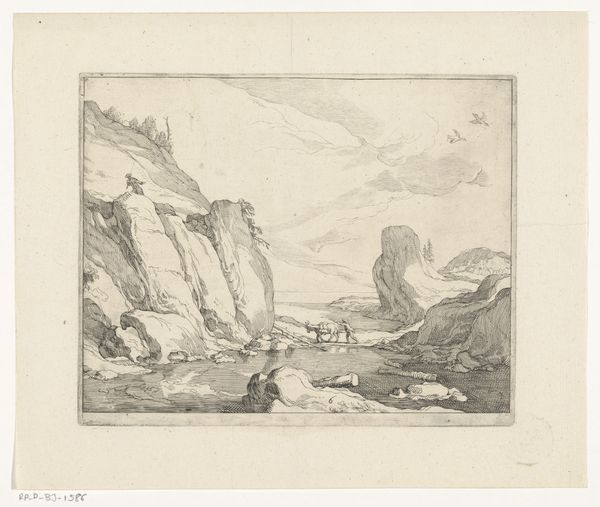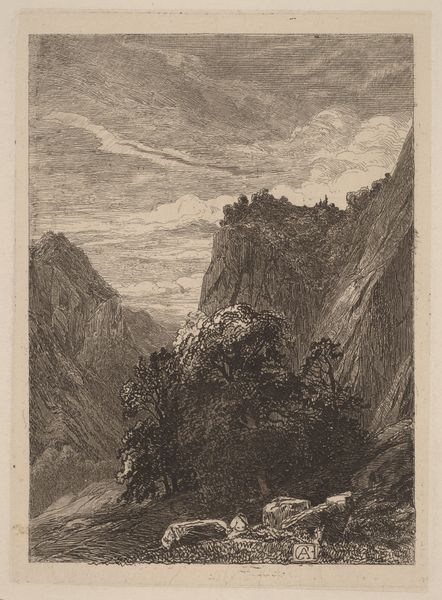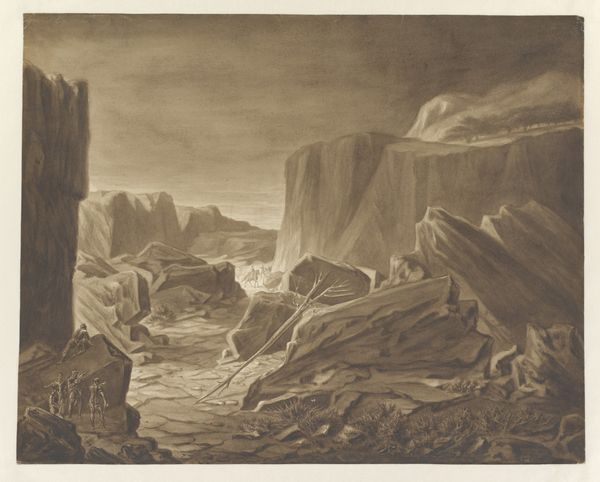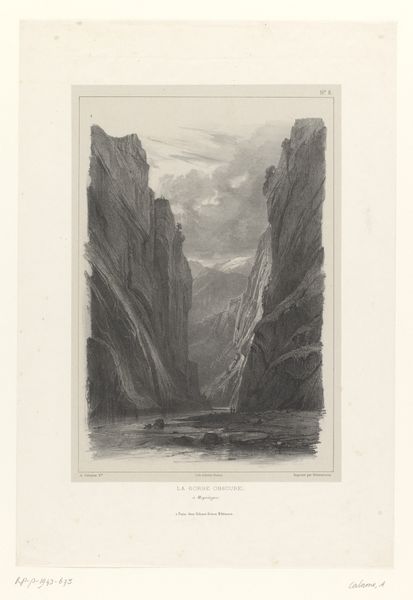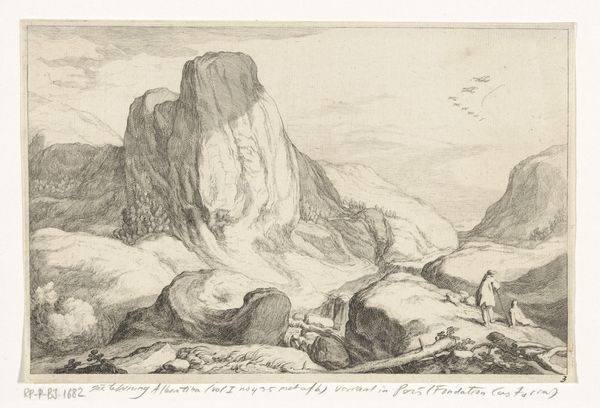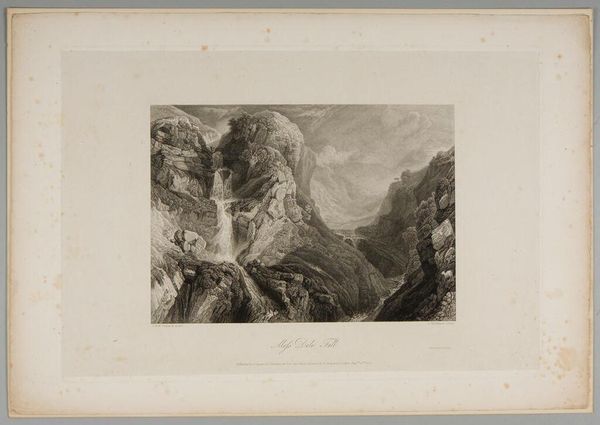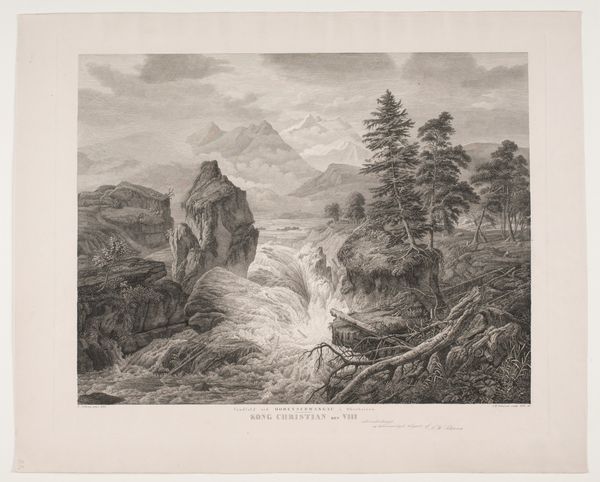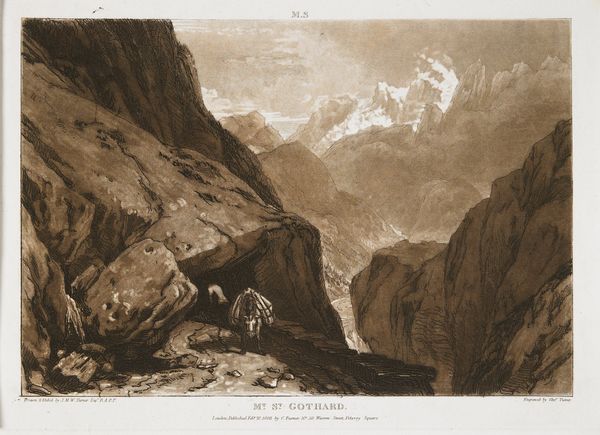
Mêr de Glace, Valley of Chamouni-Savoy (Liber Studiorum, part X, plate 50) 1812
0:00
0:00
drawing, print, etching
#
drawing
# print
#
etching
#
landscape
#
form
#
romanticism
#
line
#
sublime
Dimensions: plate: 7 x 10 in. (17.8 x 25.4 cm) sheet: 8 9/16 x 11 5/8 in. (21.7 x 29.5 cm)
Copyright: Public Domain
Curator: This is J.M.W. Turner's "Mêr de Glace, Valley of Chamouni-Savoy," dating from 1812, part of his "Liber Studiorum." It's an etching and mezzotint, exploring the sublime qualities of the Alpine landscape. Editor: Brrr! It sends a shiver right down my spine. All those jagged edges, those towering peaks, the sort of monotone palette – it feels…harsher than the real place. Curator: Precisely. Turner was tapping into the Romantic notion of the sublime – the awe and terror evoked by untamed nature, playing on the idea of nature’s form as a reflection of one's spiritual form, that one experiences upon contemplation. The "Liber Studiorum" was his attempt to categorize landscape painting and elevate its status, which gives this artwork significance beyond its face value. Editor: Classifying and categorizing does seem rather at odds with the chaotic grandeur depicted. Like trying to pin down a storm in a butterfly net. The stark contrasts, the swirling lines – they almost create an oppressive mood. I imagine a lone wanderer feeling very, very small indeed. Curator: And that was Turner’s intent, I believe. He wasn't just recording a scene; he was staging an emotional experience for his viewers, shaped, it should be remembered, by his experience as a printmaker keenly aware of audience and economics of image making and sale. He aimed to remind a rapidly industrializing Britain of nature’s power. This valley, rendered with a very specific set of stylistic conventions for 'artistic' purposes, speaks to that very real desire. Editor: It worked! Standing here, you're whisked away, beyond the everyday. You start to ponder, what is human when stacked against the eternal indifference of a glacier? Are we not, all of us, walking on very thin ice, perhaps? Curator: Indeed. Art makes us ponder, reflect, remember--its social force can be quiet, but also very effective. Editor: And hopefully a little less…coldly existential, now that we have analyzed Turner's landscape. Curator: Maybe. Though I think a touch of healthy existentialism never hurt anyone!
Comments
No comments
Be the first to comment and join the conversation on the ultimate creative platform.
